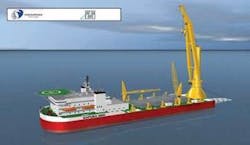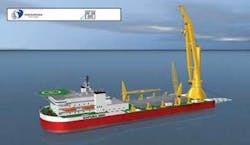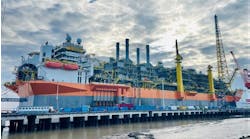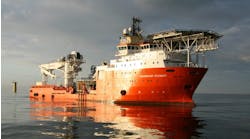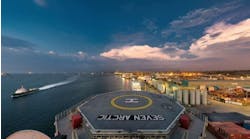Vessel availability is a serious issue for operators around the globe. Most areas of the world are strapped for resources, but in frontier areas like the Asia-Pacific region, there are not nearly enough construction and installation vessels available.
A number of companies have recognized the vessel shortage and have recently moved to fill the void. SapuraAcergy, for one, has opened an office in Malaysia and is gearing up to meet the local demand for services.
According to Graham Meil, managing director of SapuraAcergy, the Kuala Lumpur office was set up to take advantage of the local market, which he calls, “a commercial hotspot for deepwater exploration.”
Supplying the tools for construction and installation
Noticing the increase in exploration and production drilling in Southeast Asia, SapuraAcergy decided there was a need for a new vessel. The result was theSapura 3000, a vessel that Meil says is the most advanced of its type in Asia.
Certainly, the vessel can provide a wide range of services. “TheSapura 3000 has shallow-water and deepwater pipelay capability,” Meil says. “It also has heavy lift. It will have a J-lay tower for ultra deepwater pipelay and steel catenary riser (SCR) installation, all supported by deepwater specification construction ROVs. The Sapura 3000 will be dedicated to the Asia-Pacific market and is the first vessel with this type of capability to be based in the region.”
According to Meil, the vessel was initially designed for SapuraCrest as a shallow-water pipelay and crane barge. “When Acergy got involved, the specification increased to enhance the DP system and deepwater capability, and additional investment was made. This enabled a fast entry into a growing market for deepwater construction services.”
Vessel construction has been driven by the market from the outset. The market for deepwater construction capacity is increasing. In the Asia-Pacific region, Meil says, 40% of the oil and gas reserves are located in deepwater, where there is a shortage of vessels capable of carrying out construction and installation work. SapuraAcergy believes it is in a good position to answer this regional need. “With theSapura 3000 together with the technical competence that we are creating at SapuraAcergy in Malaysia, we stand well placed to achieving a leading position,” he says.
The vessel
TheSapura 3000 is 151 m (496 ft) long with a beam of 38 m (125 ft).
The vessel will have considerable crane capacity, with a large main crane capable of lifting 2,722 metric tons (3,000 short tons) +/-25° revolving over the stern, 1,996 metric tons (2,200 short tons) fully revolving, and 1,452 metric tons (1,600 short tons) fully revolving without ballasting. The vessel will also have two 37-metric-ton (40-short-ton) pipe-handling cranes.
TheSapura 3000 will be able to carry out manifold and PLET deployment as well. Structures can be deployed to seabed with the vessel’s 726-metric-ton (800-short-ton) auxiliary hoist, 200-short-ton main (181-metric-ton) crane whip hoist, or 360-metric-ton (397-short-ton) A&R winch.
TheSapura 3000 is designed for steep S-lay over a 90-m (295-ft) stinger at the stern that allows a departure angle of up to 87° and has a maximum dynamic tension capacity of 300 metric tons (331 short tons). The vessel can also perform J-laying.
In addition to its lifting and pipelay capability, theSapura 3000 will be outfitted with two newbuild 150-hp intervention class ROVs that feature a thruster-equipped tether management system that allows dual operation and assists with touchdown monitoring. The ROVs can be launched and recovered quickly with electric winches.
Construction
Not surprisingly, SapuraAcergy is using a local yard to build the new vessel.
“The construction of the ship is by a consortium of Sembawang in Singapore, where the ship is currently being outfitted, and Huisman, which supplied the pipelay equipment, cranes, and associated deck equipment,” Meil says.
Wärtsilä is supplying the engines and thrusters for the vessel, and Kongsberg is providing the dynamic positioning and vessel management systems. Imtech is responsible for the electrical system, and Acergy/Schilling is supplying the two workclass ROVs.
Yard selection was based on technical evaluation and commercial terms, according to Meil. “The award was made, and construction commenced while capacity levels were reasonable before reaching the overheated state we see today.”
Work is progressing according to plan, Meil says, with theSapura 3000 scheduled for completion in 3Q 2007. The vessel’s first job is likely to be for Kikeh, the first deepwater development offshore Malaysia.
